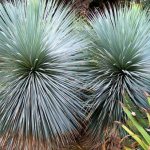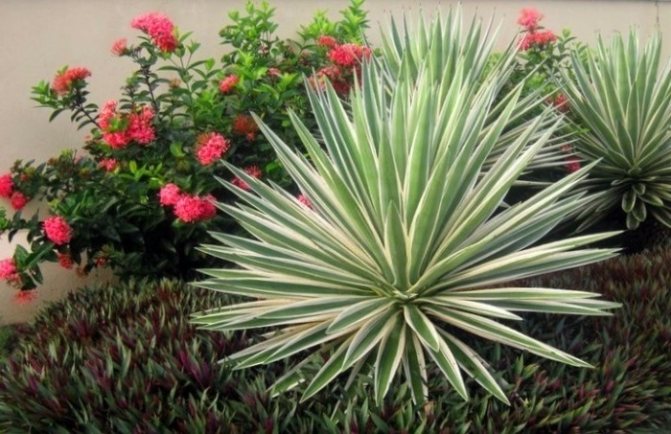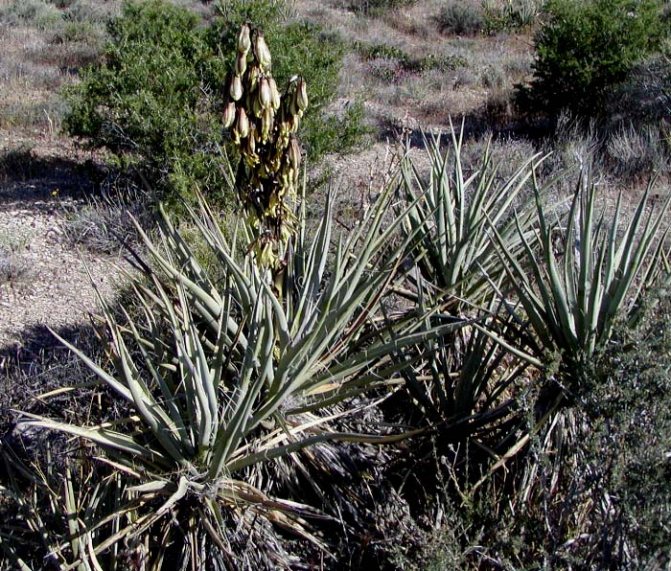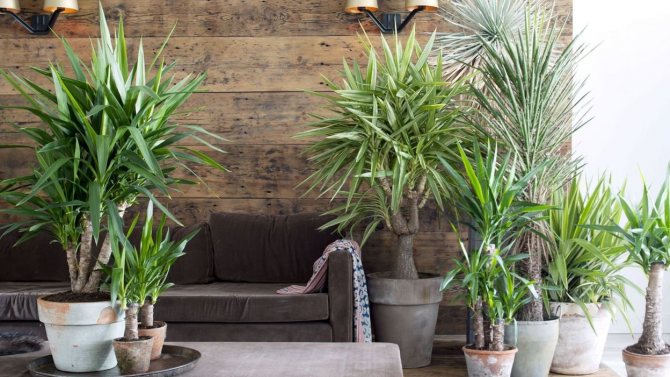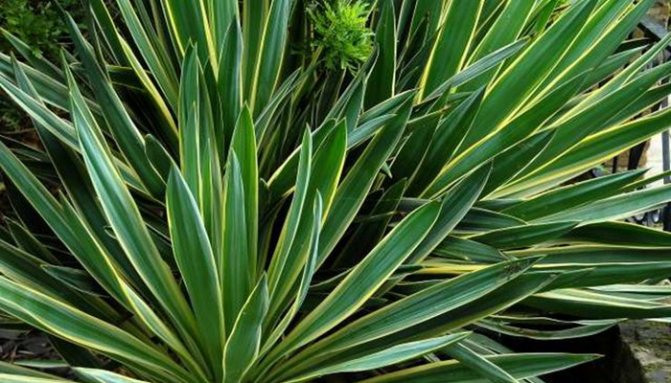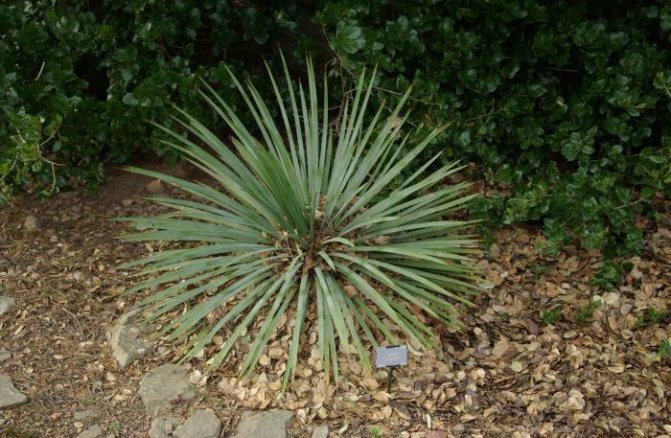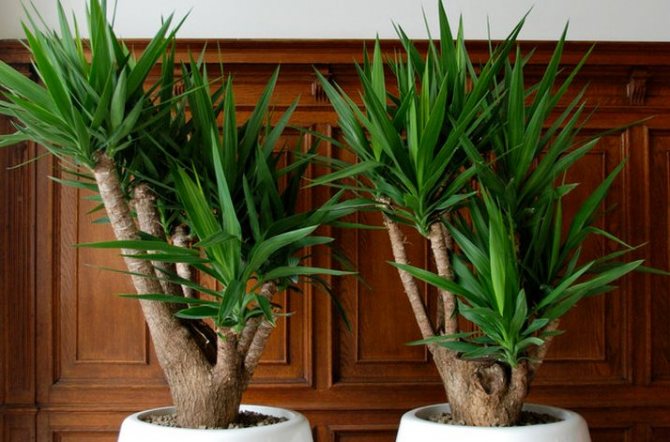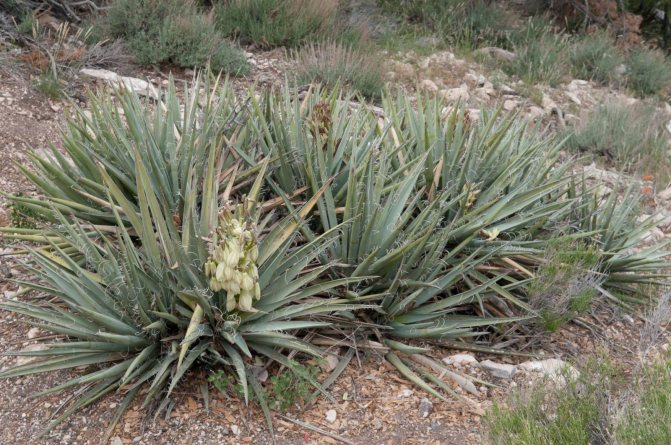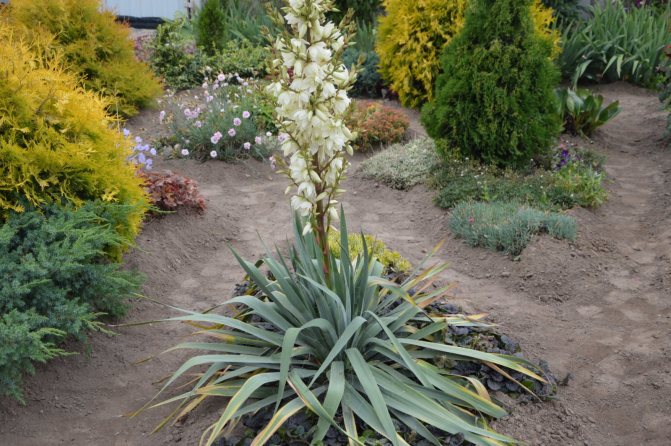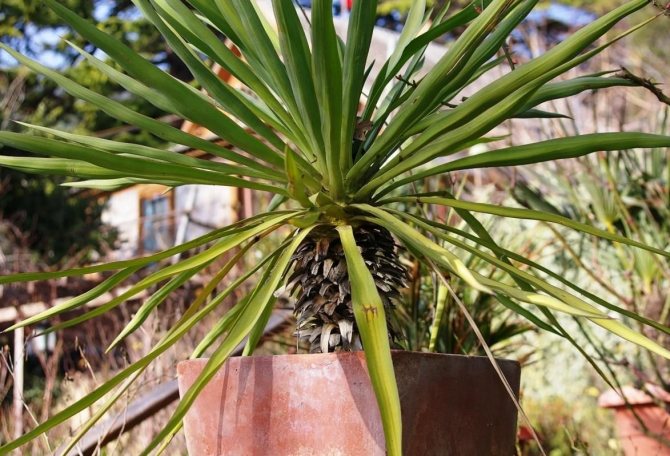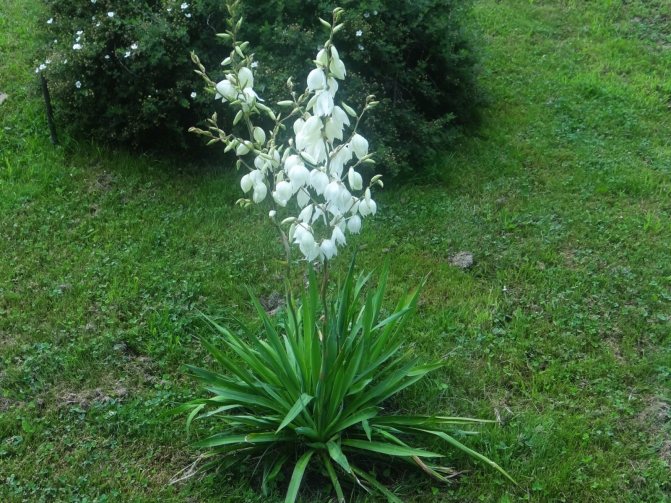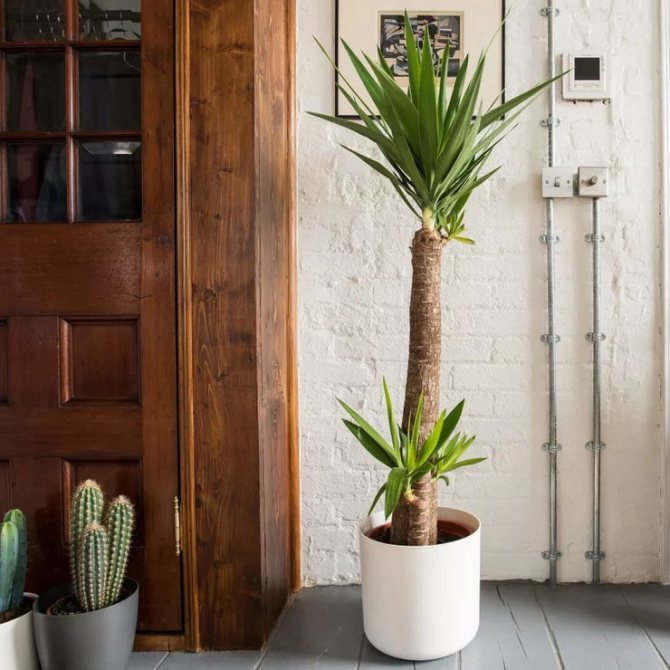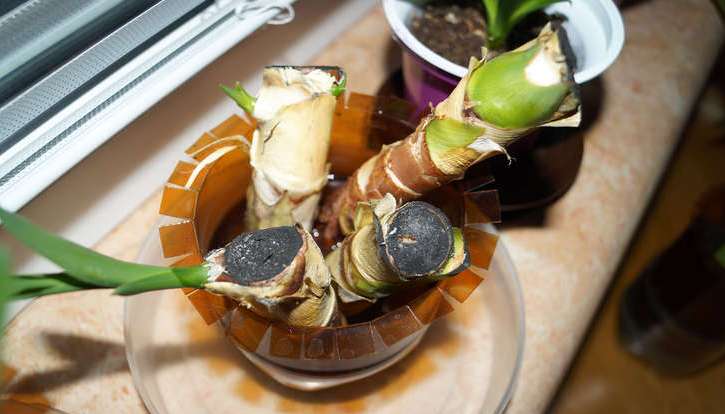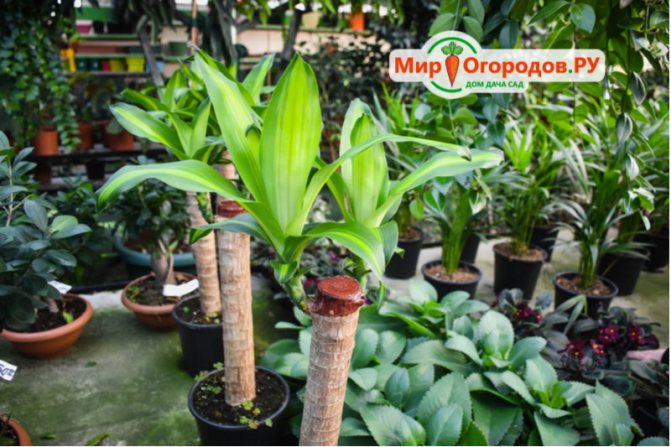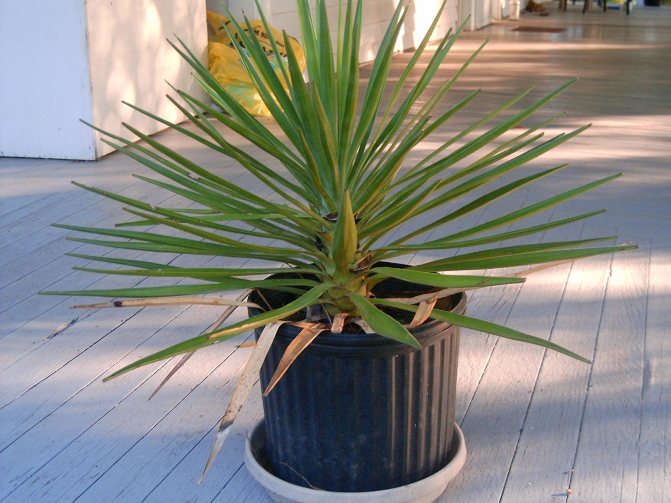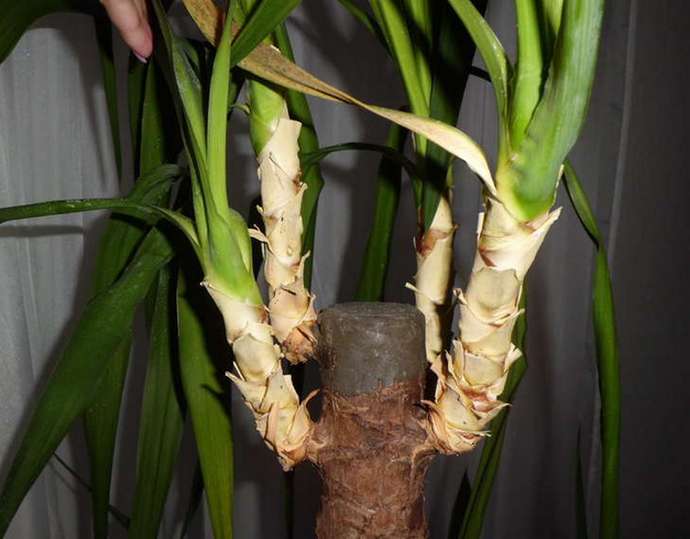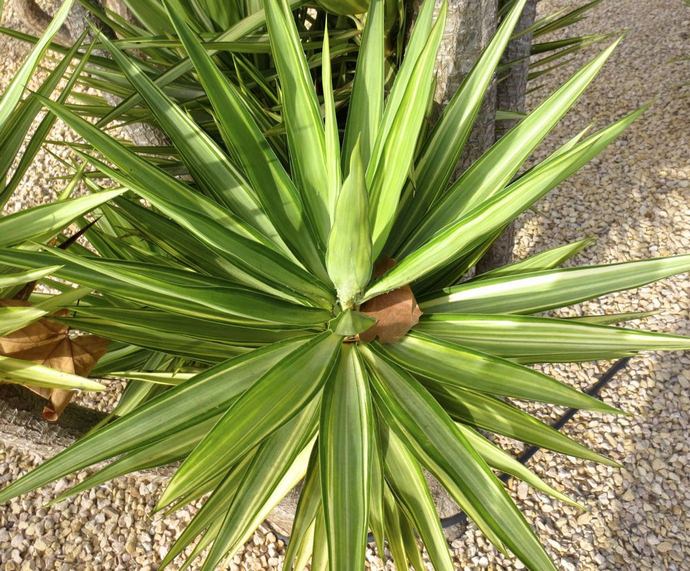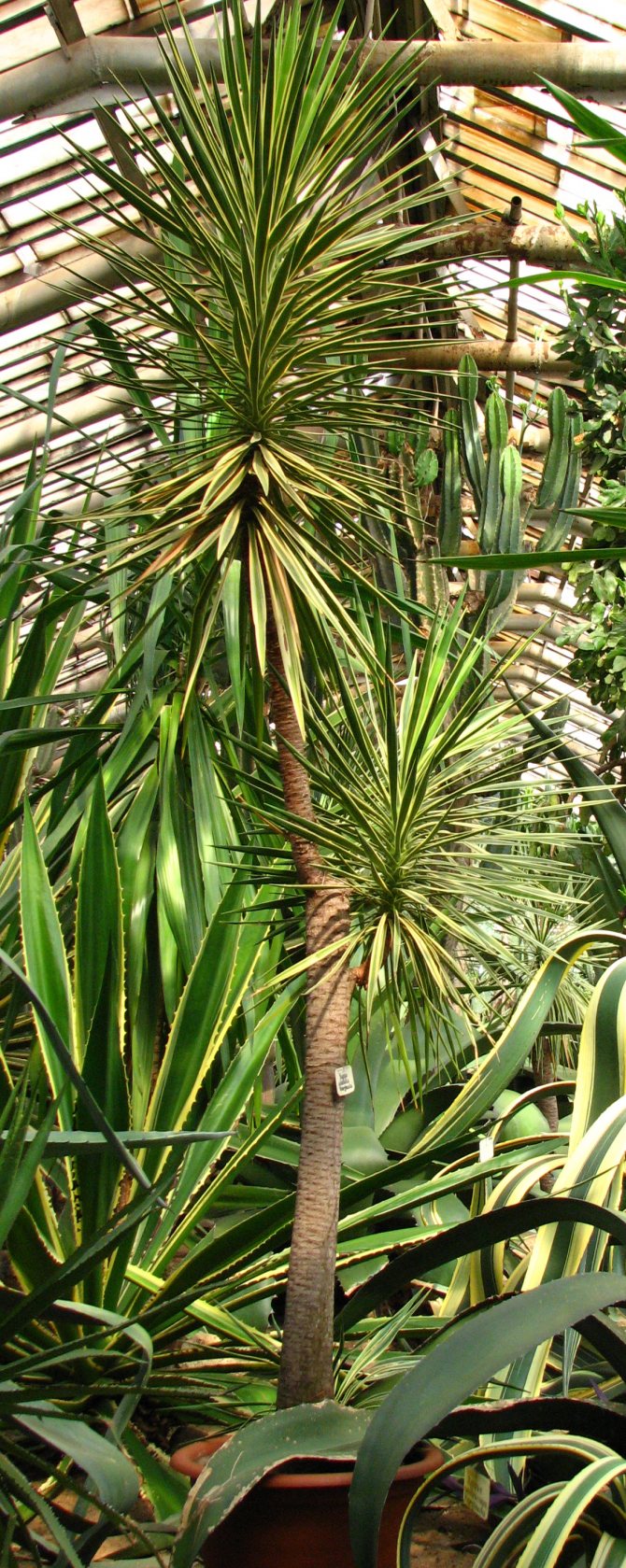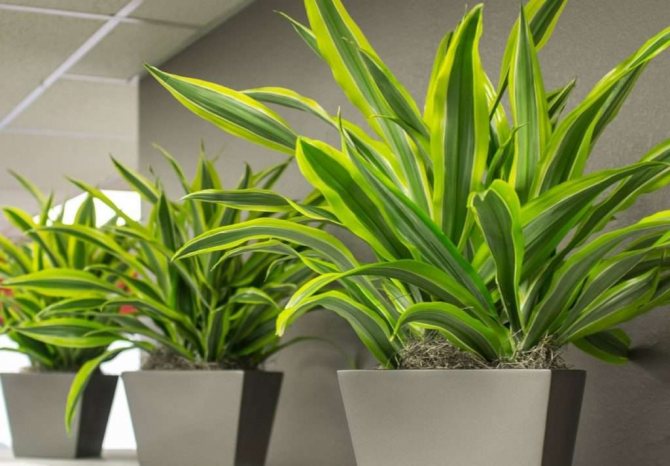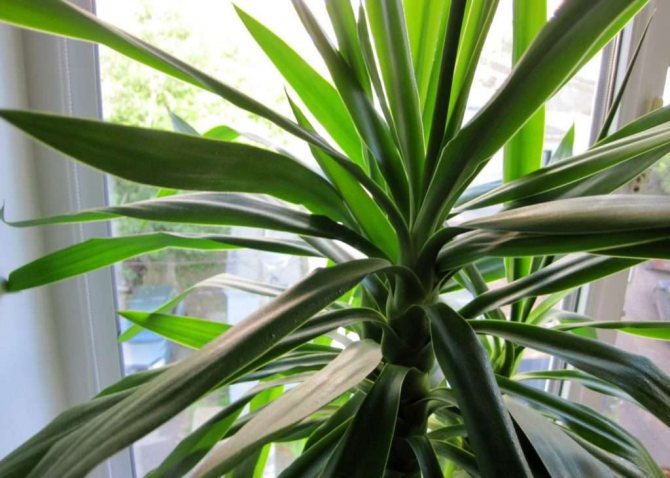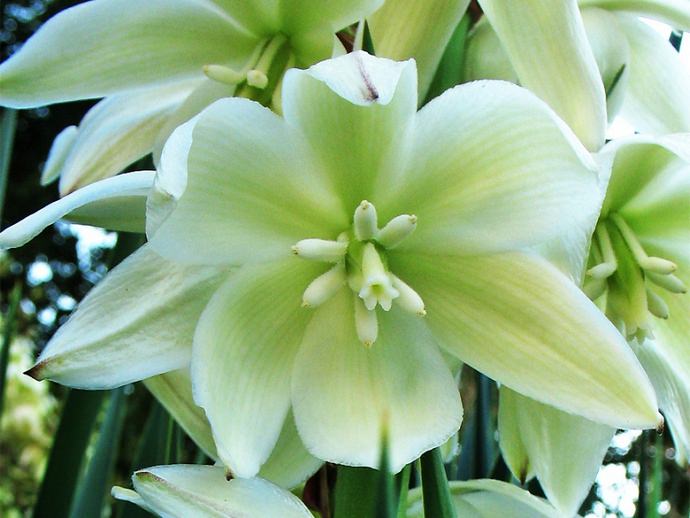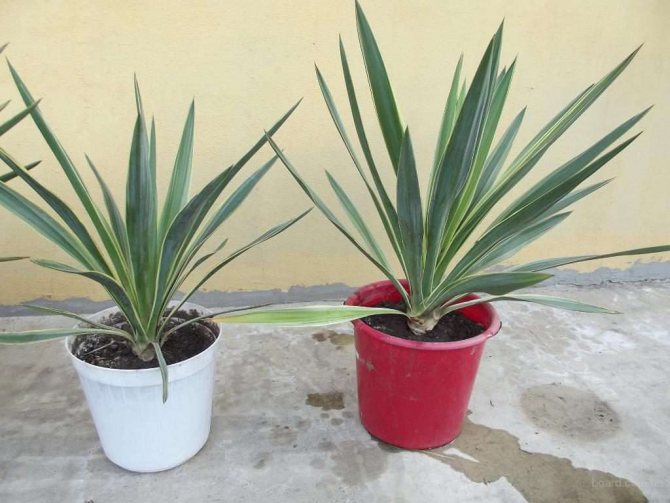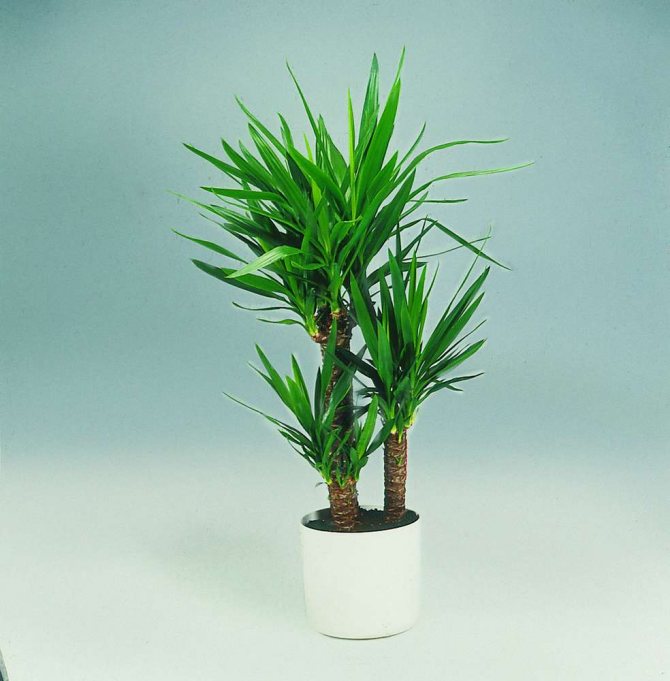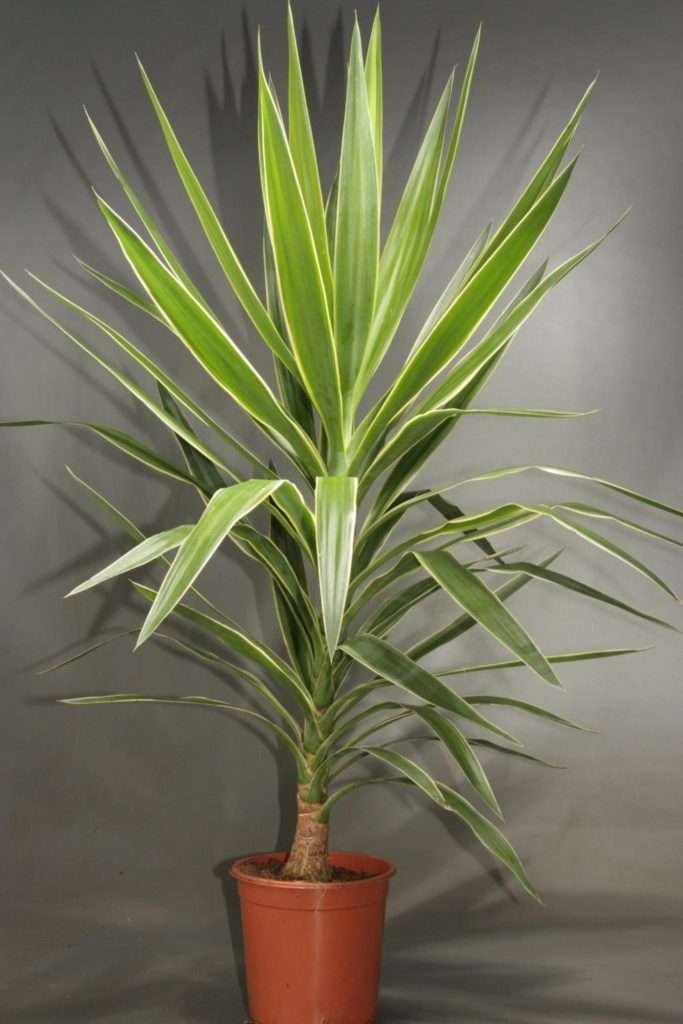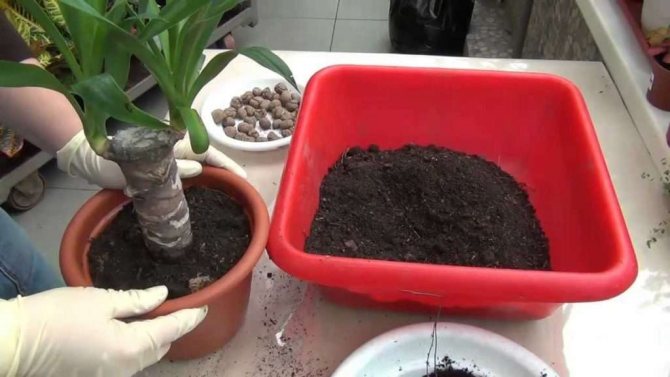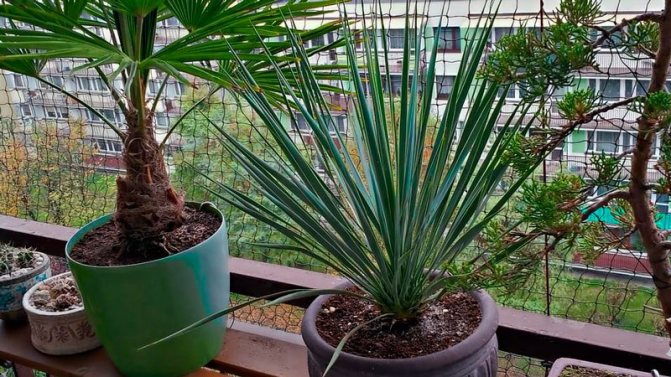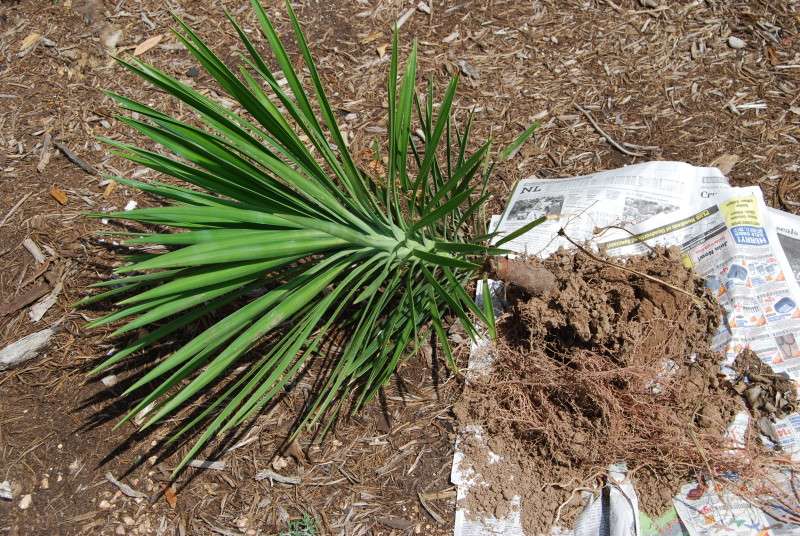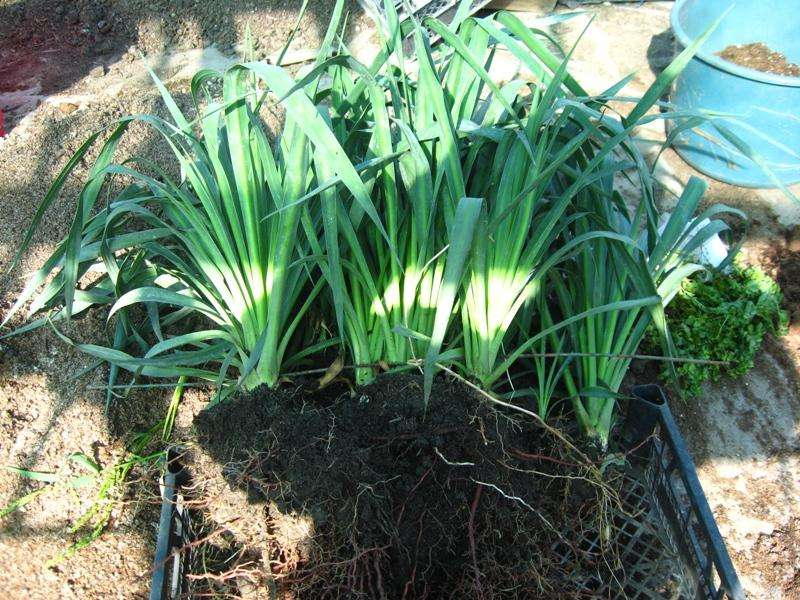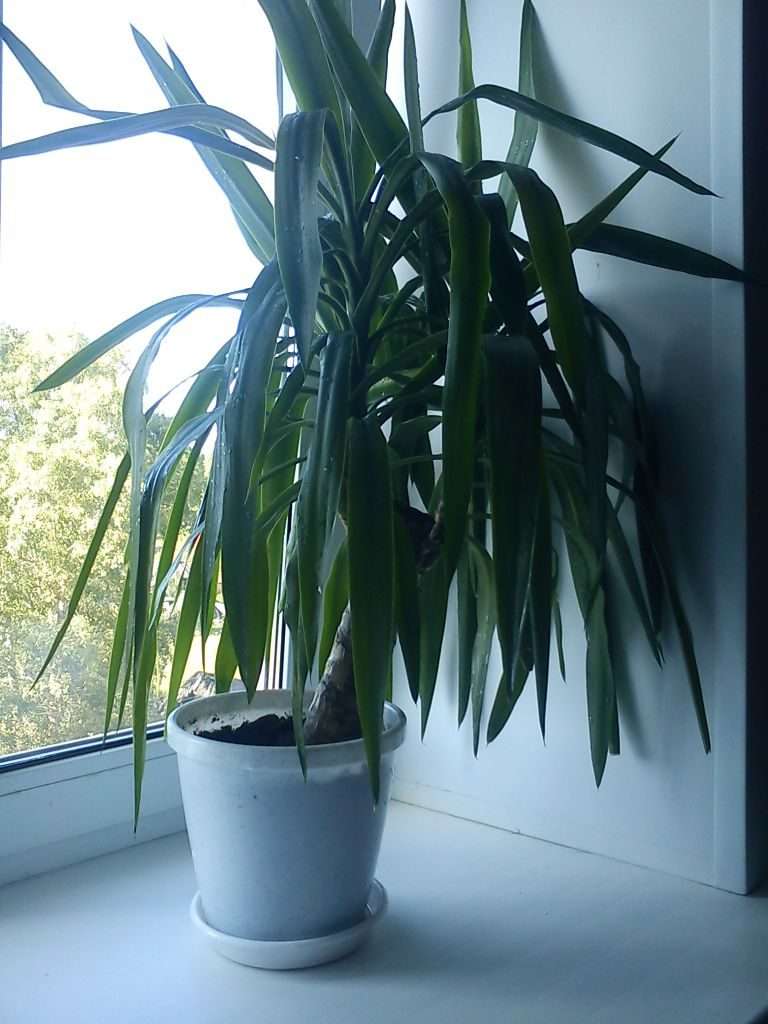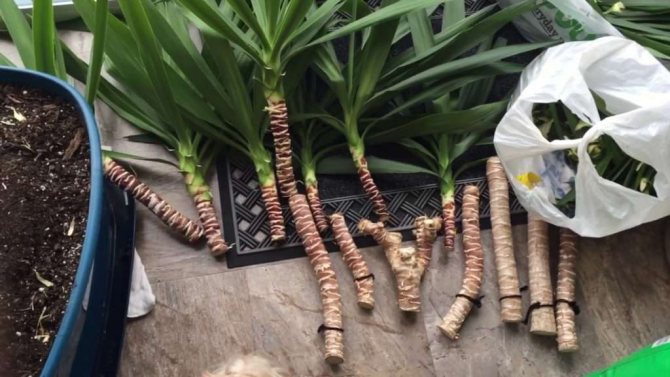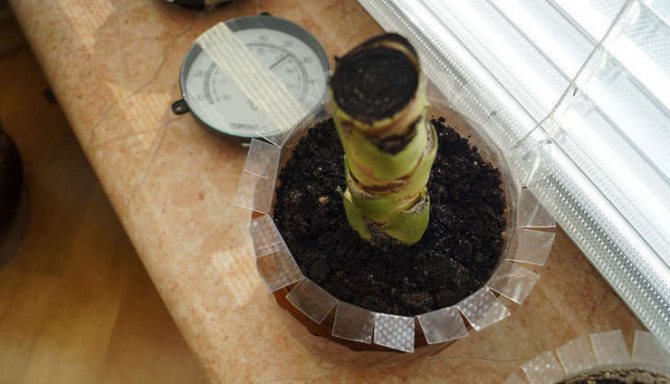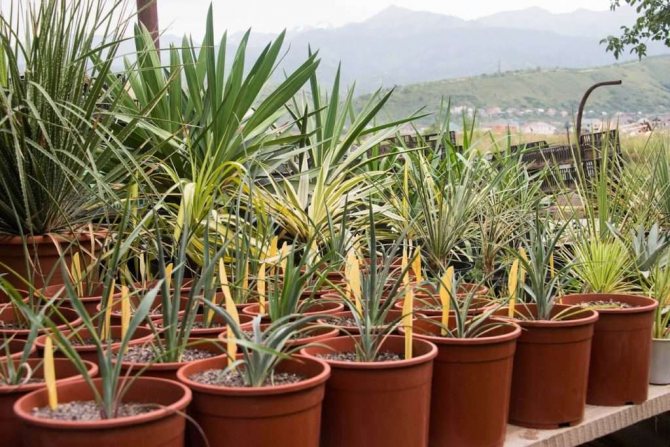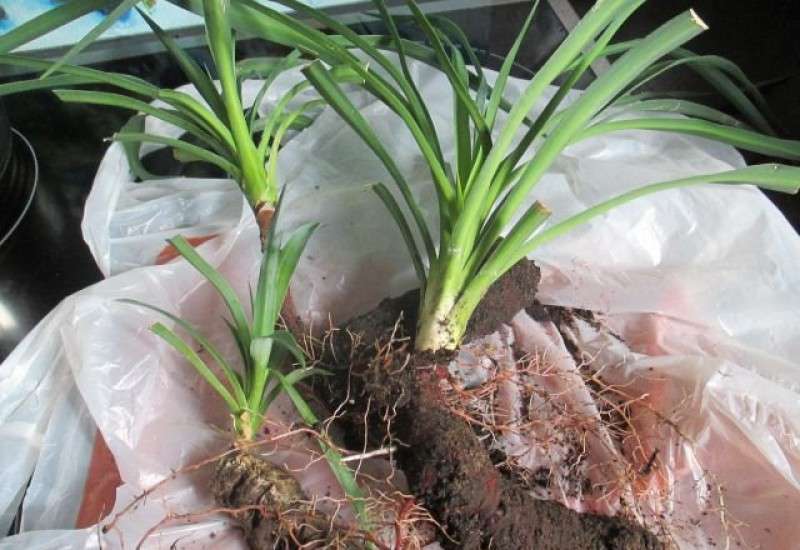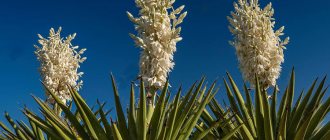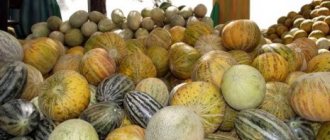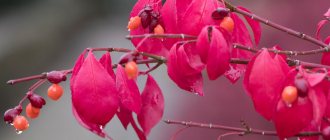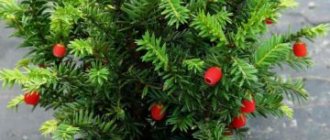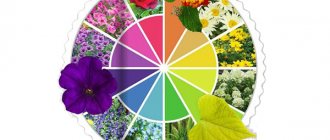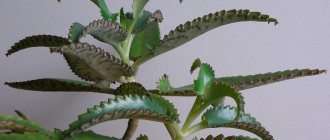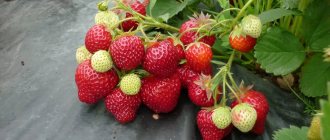Yucca is a beautiful evergreen that has North American roots. There are more than forty species of this unusual plant.
Yucca has a varied structure. It can be tree-like or rosette. Sometimes the size of the leaves reaches one hundred centimeters in length. Leaves can be arranged in a rosette form or collected in a bunch. Leaves are also different (dark green, gray, hard, falling, with smooth or jagged edges). The flowers are also white or beige, in the form of a bell or a cup.
At home, it very rarely pleases its owners with flowering, but in a garden, some types of Yucca even feel great.
Several types of this flower are used to make ropes.
Yucca has fruits and they are also different. In some species it is a dry box, while in others it is an edible juicy fruit.
In North and Central America, Yucca is used for the production of sugar and rope products. Interestingly, the production of Jeans started from Yucca fiber. Even now, the fibers of this plant are added to the jeans fabric for better durability.
A yucca that grows at home will look more like a palm tree and can grow up to four meters in height if the ceiling height allows it. It will bloom at home very rarely, but this is quite possible to achieve.
Now it is a very popular plant among landscape designers. It looks very good in a modern interior style and even a classic one, as well as in the office.
general information
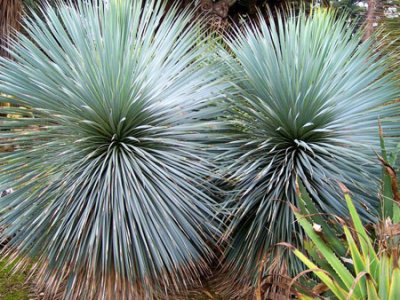
Yucca is a perennial, tree-like plant. Belongs to the Agave family and has about 20 species.
Some species, despite their southern origin, are able to winter outdoors in the southern regions of Europe, the Caucasus and Crimea.
In colder areas, ornamental Yucca is bred as a houseplant.
The stem of an adult yucca is ligneous, branches weakly and can reach 4 meters in length, so you should carefully choose a room for it.
REFERENCE: There are species in which the stem is practically absent - such a plant is a few lush rosettes of leaves arranged in a spiral.
The yucca leaf is large, narrow and long. The color and size of the leaves varies depending on the specific variety of yucca, but their structure and arrangement are common.
The flowering of yucca will take a long time, as the plant is long-growing and blooms only in adulthood. The inflorescence is large, branched, located on its own long (up to 2 meters) stem. Bell-shaped flowers grow on short pedicels and are directed downward.
Yucca fruits are boxes, or large bulk berries.
Yucca fruits photo:
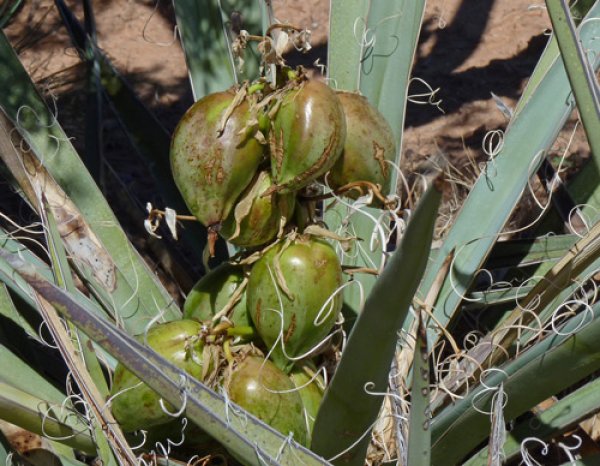

Gallery
- Yucca aloifolia
- Yucca angustissima var. avia
- Yucca baccata
- Yucca baccata var. baccata
- Yucca baccata var. brevifolia
- Yucca brevifolia
- Yucca carnerosana
- Yucca cernua
- Yucca decipiens
- Yucca elata
- Yucca faxoniana
- Yucca filamentosa
- Yucca filifera
- Yucca flaccida
- Yucca gigantea
- Yucca glauca
- Yucca gloriosa
- Yucca gloriosa var. recurvifolia
- Yucca harrimaniae
- Yucca intermedia
- Yucca pallida
- Yucca periculosa
- Yucca reverchonii
- Yucca rigida
- Yucca rostrata
- Yucca rupicola
- Yucca schidigera
- Yucca schottii
- Yucca standleyi
- Yucca thompsoniana
- Yucca torreyi
- Yucca treculeana
- Yucca utahensis
Types: description and photo
The most common types of yucca.
Yucca elephantipes Regel
Common view. This is the largest Yucca. Over time, the plant begins to resemble the leg of an elephant, which explains the name.
Elephant palm photo:


Filamentous (Yucca filamentosa L.)
REFERENCE: A frost-resistant variety that can withstand temperatures down to -20 ° C.
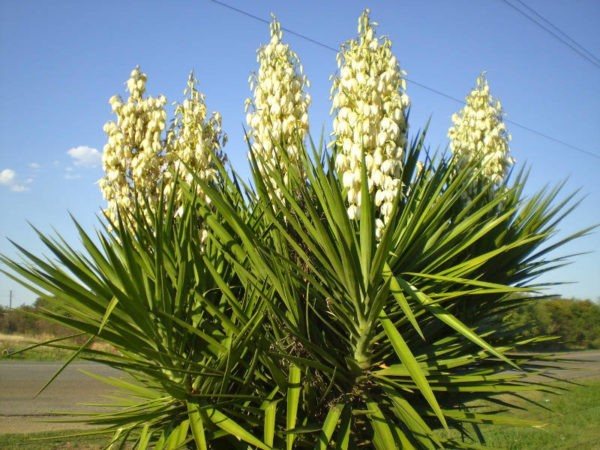

Sizaya (Yucca glauca Nutt.)
The bluish leaves of this plant are decorated with a white border, and white threads hang from their edges.
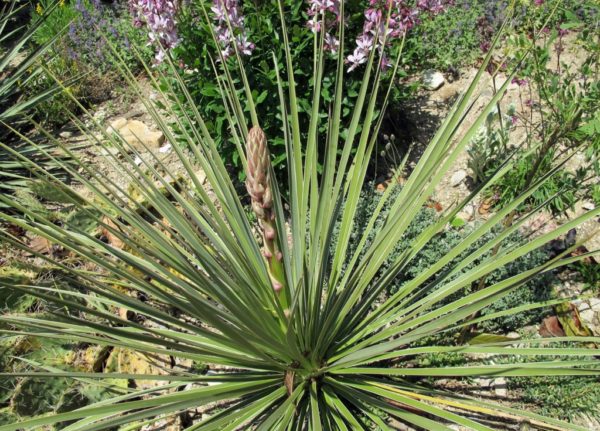

Aloe (Yucca aloefolia)
A plant with bright green leaves, the edges of which resemble saw-teeth.
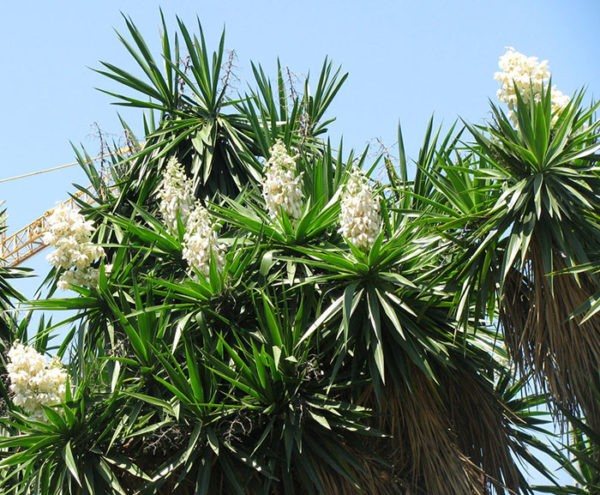

Historical background
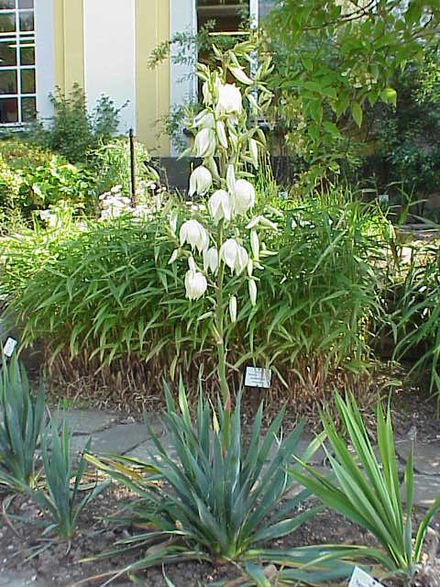

Yucca filamentosa
In the Russian language, confusion is very common because of the second name of the edible plant cassava - "Yuka" (Yuca
). As a result, the mention of Yuki (cassava) in the report of the conquistador Gonzalo Jimenez de Quesada "A Summary of the Conquest of the New Kingdom of Granada" (1539, edited by an anonymous author in 1548-1549) is mistakenly considered the first mention of yucca (
Yucca
):
The food of these people is the same as in other parts of India, because their main food is maize [maíz] and yucca
[yuca]. In addition, they have 2 or 3 varieties of plants from which they derive great benefit for their food, of which there are some, similar to truffles, called
ionas
[ionas] [2], others are like turnips called
cubias
[cubias] that they throw into their concoction, it serves as an important product for them.- Gonzalo Jimenez de Quesada. "A summary of the conquest of the New Kingdom of Granada" [3].
And in the same way in 1553 in the book "Chronicle of Peru" by Pedro Cieza de Leon:
The valley is very flat and is always abundantly sown with corn and yucales, and has large fruit trees and many pehibaes palm groves.
- Cieza de Leon, Pedro. Chronicle of Peru. Part one. Chapter XXVIII. [4]
Homeland of the plant and natural habitat
The homeland of yucca is the subtropical regions of Central and North America. But despite the love of warmth, this plant has conquered not only the areas in which it can comfortably exist, but even relatively cold Europe and Russia. The main role in this was played by its spectacular appearance: similar to an ornamental palm tree. Outdoor yucca perfectly complements any garden or interior.
Already in the 19th century, certain types of yucca began to be used both in greenhouses and as indoor plants. These were the aloe and elephant varieties. There is a description of the elephant yucca grown in the St. Petersburg Botanical Garden, made in 1859 by the botanist E.A. Regel. And in the second half of the 20th century, the false palm conquered Asia, Europe, and the middle zone of Russia.
Later, frost-resistant varieties were also bred. These plants can tolerate frost for several years, until the trunk of the yucca begins to grow overgrown with woody tissue, which is vulnerable to cold.
About the agave family
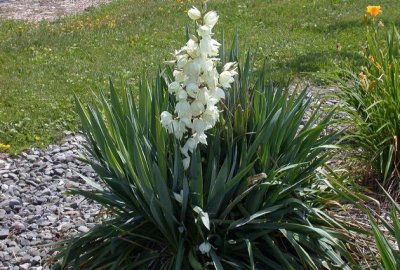

Yuccae (Yucceae) are one of three tribes of the agave subfamily.
Agave is a subfamily of the asparagus family. The type genus of this subfamily is agave.
The family is characterized by a rosette arrangement of leaves that are elongated in length and often have thorns along the edges.
The trunk is tree-like, in some species (short-leaved) it reaches a height of 12 meters.
REFERENCE: Agave has 10 genera and more than 450 species, distributed mainly in Central and North America. Some species are found in East Asia.
The tribe of yucca is divided into 2 genera - hesperaloe and yucca itself. About 50 species of yucca are known, the range of which occupies vast areas from the south of the Atlantic coast of North America to the south of the Pacific coast.
Reproduction
Yucca reproduces by seeds as well as by shoots.
To plant from seeds, you need to sow them immediately after they are harvested. The seed pot must be covered with foil with mandatory ventilation every day.
Seeds sprout thirty days after planting. Young sprouts should be planted in small pots, after a year they should be planted in larger pots.
Planting from a piece of plant trunk is considered a very popular method.Most often this is a segment from an elephant yucca. Since this plant is able to retain moisture for a long time, it is successfully transported over very long distances.
It is imperative to inspect the stalk in the store so that it is not rotten or spoiled.
Growth from the cuttings is a very long process. You definitely need to know where the top and bottom of the line are. If this is not clear, then you can bury the stalk horizontally, and when it germinates, transplant the shoot into a separate pot.
Unsuccessful transplant
The transplant may be unsuccessful in some cases. Too frequent watering contributes to the decay of the roots of the plant, and it dies. If the plant begins to darken, but it still has good leaves, it can still be saved.
Above the part of the trunk that has begun to rot, you need to cut off the bark about half a centimeter in diameter. Tie the cut place with moss and foil. Moss must be kept moist at all times. In this place, after fourteen days, new roots are formed, which need to germinate for another fourteen days. Then the new roots need to be cut off and sprinkled with charcoal, and then transplanted into a separate pot.
Breeding features, care, preparation for wintering
First of all, it is worth remembering that indoor yucca loves good lighting, but it should still be protected from direct sunlight.
The best place for it would be a window on the east or west side.
You can also use diffused artificial lighting. In warm weather, the plant can be taken outside.
Unfortunately, natural reproduction of yucca in Russia is impossible, since insects are not found here that participate in its pollination. Therefore, seeds, tops and cuttings are used to breed yucca.
You can read more about the methods and intricacies of yucca breeding in this article.
Like any thermophilic plant, it requires special measures to prepare for winter. On this page you can find a detailed description of this process.
Yucca care at home
Since the homeland of the described plant is the tropics and subtropics, when grown indoors, conditions should be created for it close to natural, namely heat, high humidity, regular access of fresh air and bright lighting.
Did you know? Some peoples, for example, the inhabitants of the Dominican Republic, eat the fruits of wild yucca species along with potatoes. They resemble berries with dense fleshy pulp, have a high nutritional value and useful properties.
Lighting and pot location
When keeping in a room for a tree, you should choose the brightest place. It is better to put it by the window facing the south side, shading from the midday direct rays of the sun. Shading should be mandatory, otherwise the leaves of the plant will begin to dry and sunburn will be observed.
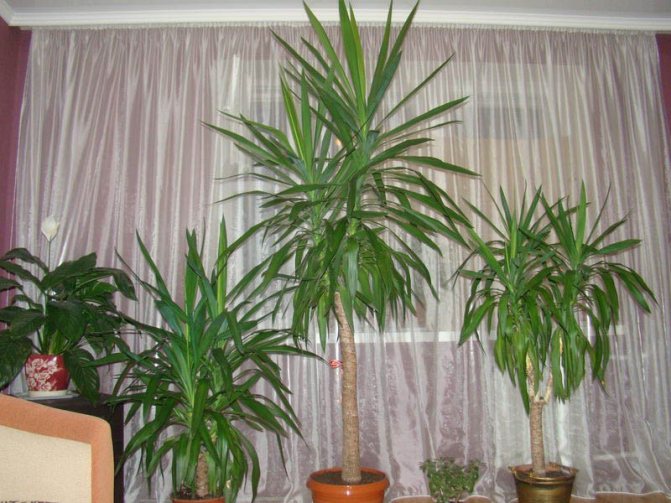

It will also grow well near the east and south windows. If grown from the north side, artificial lighting will be required. Additional lighting is also needed in winter. It is better to install fluorescent lamps at a distance of 30-50 cm from the flower. The required duration of daylight hours for a yucca is at least 12 hours. If there is not enough light, the leaves of the plant will turn pale and elongate.
Important! Every 14 days, the yucca pot should be rotated 90 ° so that its ground organs are evenly illuminated. Thus, it will be possible to ensure that the crown is symmetrical.
Temperature
In the spring and summer period, the plant feels well at a temperature of + 23 ... + 25 ° С. On hot days, it is advisable to take out the pot of room culture to fresh air. From autumn, the temperature must be reduced in order to provoke the transition of the plant to a dormant period. It is important to protect the plant from drafts, temperature jumps, which can significantly reduce the decorative effect and even destroy it.
Humidity
Humidity for this room culture needs increased - 60-70%. The higher the thermometer is, the higher the humidity level should be.
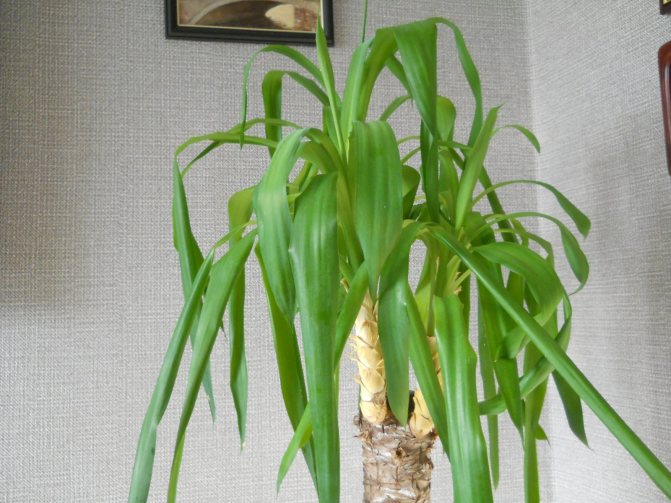

To achieve such conditions, on too hot days and during the heating season, it is necessary to spray the space around the flower with a spray gun, put the pot on a pallet with moistened expanded clay, pebbles, wash under the shower, or install a humidifier in the room. At other times, the flower does not require regular spraying. You only need to periodically wipe the sheets with a damp cloth.
Watering
For yucca, rare but abundant watering is needed. The next moistening should be done when the soil dries out 5 cm in depth. Watering can be carried out both from above - under the root, and from below - into a pallet. Waterlogging and stagnation of moisture are detrimental to the plant, so it is important to ensure that no bays occur. If this happened, then you need to dry the soil in a timely manner. The fact that the plant has too much moisture will be indicated by curled leaves and the appearance of brown spots on them.
Moistening the soil must be done with tap water at room temperature, settled for 1-2 days or softened and purified through a filter from harmful impurities. For 5 liters of soil, approximately 1 liter of water is required.
Read about home breeding methods for yucca.
Top dressing
Yucca does not require frequent feeding. They need to be produced once every 2-3 weeks from spring to September with ready-made universal mineral fertilizers in a reduced dosage. Only a healthy tree is fed. A plant with signs of illness or pest damage must first be cured, and then, after some time, fertilized. Also, you should not feed the newly transplanted indoor culture - you need to wait until its adaptation takes place.


The soil
Planting yucca should be done in a universal soil purchased in advance in a specialized store. You can also make a soil substrate with your own hands.
A mixture suitable for yucca is recommended to be made up of the following ingredients:
- turf soil (2 parts);
- sheet soil (2 parts);
- sand (2 parts);
- humus (part 1).
For mature plants, humus is not needed; the amount of sod land should be increased to three parts. When compiling the soil with your own hands, it must be disinfected by calcining it in an oven or microwave, pouring it with a solution of potassium permanganate, boiling water, holding it over the steam.
Transfer
Young plants should be replanted annually. Adults - once every few years. It is recommended to transplant in the spring. However, yucca is easily adaptable if the procedure is carried out in the summer. For transplanting, you should purchase a new pot, 2-3 cm larger and corresponding to the size of the root system. The material of the pot is unimportant - it can be plastic, ceramics, or a tub made of wood.
Read more about how, when and what to correctly transplant yucca into.
Yucca transplant technology is as follows:
- The day before the planned procedure, it is necessary to moisten the soil well so that an earthen lump with roots comes out easier.
- Lay a drainage layer of expanded clay, pebbles, gravel, brick fragments at the bottom of the pot.
- Pour a small layer of soil on top.
- Remove the yucca from the old pot without destroying the earthy ball.
- Place it in the center of the new container.
- Fill the voids in the pot with earth, not filling up to the edge of 1.5–2 cm.
- Tamp down slightly.
- Moisten the soil.
Pruning
Check out
Features of correct pruning of yucca at home This plant definitely needs pruning, which will limit its growth and give the crown the desired shape. For the first time, it can be produced when the trunk reaches a diameter of 6 cm.
The procedure is planned for early spring, before the tree begins to actively grow. It is carried out with a knife with a well-sharpened and disinfected alcohol solution.
The trunk is cut so that a high stump with 2–5 buds remains. The cut site is powdered with activated carbon to avoid the development of rot. In the future, you need to carry out the usual care. After 2-3 weeks, the kidneys left near the cut should wake up. The cut off top can be rooted and a young tree can be grown from it.
Features of the rest period
Yucca, like most tropical crops, has a pronounced dormant period that begins in November and lasts until March. The plant owner must take this into account and create all the conditions for the indoor culture to enter the winter in a state of "sleep".
The transition to a dormant period is triggered by two actions:
- a gradual decrease in temperature to + 13 ... + 15 ° С (the lowest threshold is + 10 ° С);
- by reducing the number and volume of irrigation to a minimum - once every 10 days.
Important! When growing yucca in winter without lowering the temperature, there is a high risk that the leaves will turn yellow and the roots will rot.
Starting in October, all feeding should be stopped, as this can cause serious damage to the tree. They will need to be renewed only from March or April. In conclusion, we note that yucca is a common indoor culture that requires light, heat, high humidity and easy maintenance. There are several varieties of the tree, which differ in the size, shape and color of the leaves. The flower looks great when planted alone or in combination with other indoor crops.
Diseases and pests
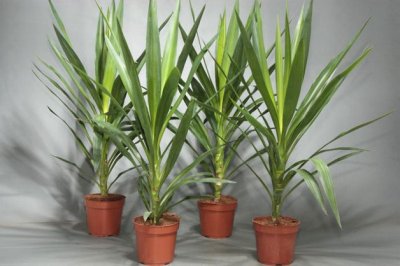

The bulk of yucca diseases are associated with improper watering.
Both excess and lack of water can lead to problems. In addition, the temperature regime can also affect health.
As for pests, even in Russia there are parasites that can cause the wilting of yucca.
Benefit and harm
Legends say that yucca is capable of bringing happiness and business success to its owners. However, the false palm can also bring quite practical benefits.
REFERENCE: This plant cleans the air well, reduces the noise level in the room. Its leaves and flowers are used in folk medicine, as well as in the light and cosmetic industries.
Yucca belongs to low-toxic plants, but individual intolerance still occurs.
REFERENCE: Yucca root has many beneficial properties. It can be useful to you in the treatment of some complex diseases. Yucca roots contain a large amount of steroids saponins, which stimulate the production of cortisone in the body and are responsible for the anti-inflammatory qualities of the plant.

